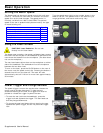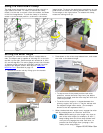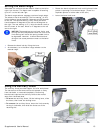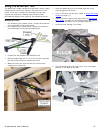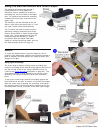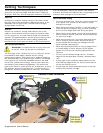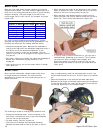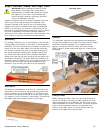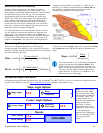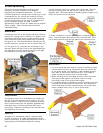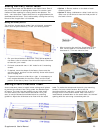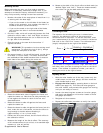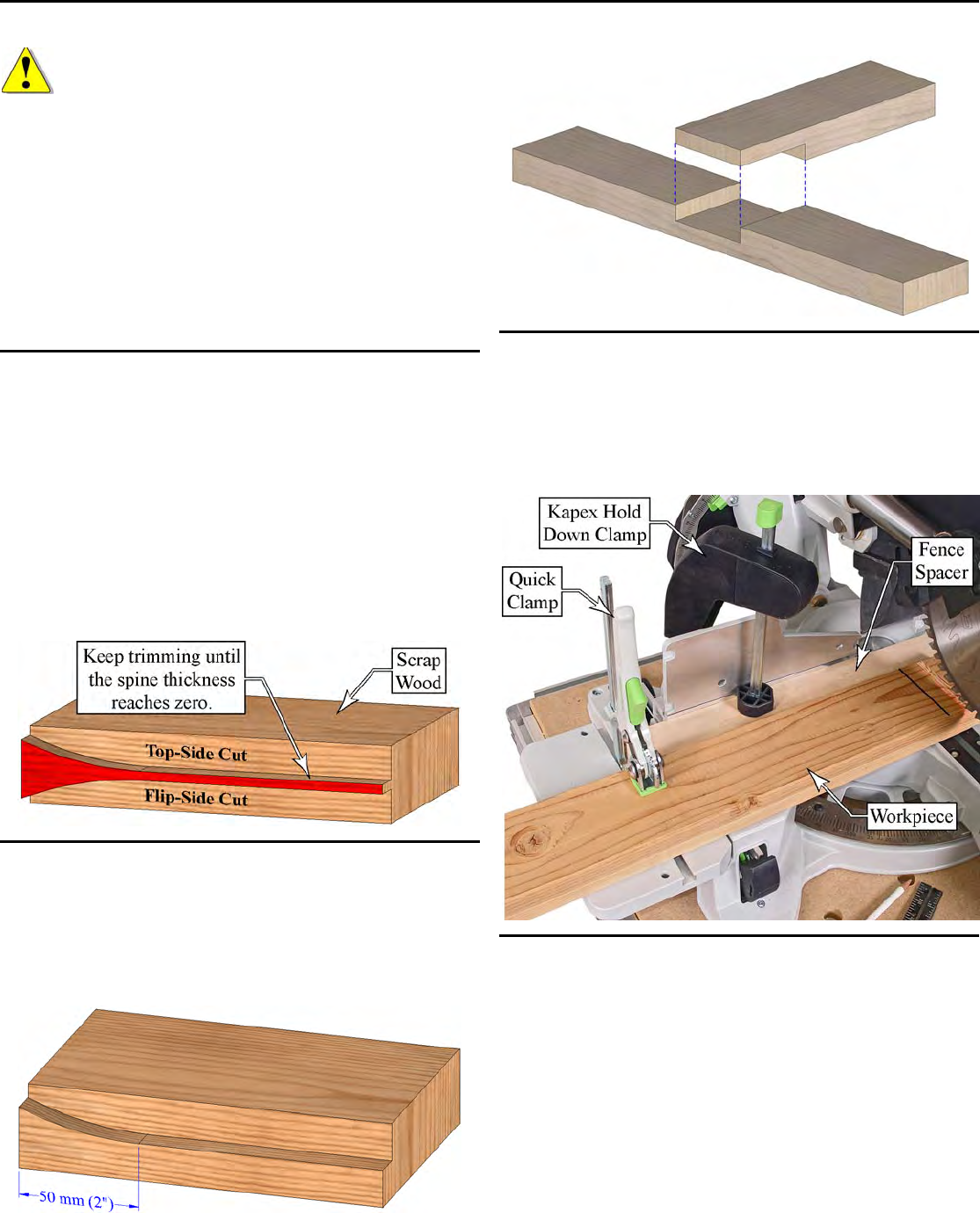
Depth Limited (Dado/Half-Lap) Cuts
WARNING! Never attempt to install or use a
dado blade in the Kapex saw. Using either a
stacked-dado or wobble-dado blade will exceed
the capacity of the arbor, and the blade may
impact the saw’s guards, resulting in personal
injury and damage to the saw.
A dado is a special type of cut where the depth of the cut
does not go all the way through the workpiece. One
common example of this type of cut is for making half-
lapped joints, which is shown to the right and described
below. In a half-lap joint, material is removed from the
intersection of both workpieces comprising the joint. When
the joint is assembled, the pieces overlap, creating a
strong joint, but unlike a full-lap joint, the thickness of the
joint is equal to just the thickness of the workpieces.
Supplemental User’s Manual 19
Depth Setting
For making a half-lap joint, it is necessary to set the saw’s
cutting depth to be exactly in the center of the workpiece
thickness. The most accurate way of finding the center of a
board is to trim from both sides until the two cuts meet.
Use a piece of scrap wood that is the same thickness as
the actual workpiece. Starting with a depth setting that
you know to be less than half the workpiece thickness,
make a cut from the top side, and then flip the piece over
and make a second cut, as shown below by the Red color.
Gradually lower the depth of cut and repeat these two cuts
until the two cuts meet, and the spine reaches a zero-
thickness. This is exactly the center of the workpiece.
Fence Spacer
The center of the sawblade is 50 mm (2”) forward of the
saw’s fence, which results in the curved ramp at the rear
of the cut shown in the image below. To account for this
and remove the radius at the end of the cut, add a 50mm
(2”) spacer in front of the fence, and clamp it in place with
the Kapex hold down clamp as shown to the right.
Half-Lap Joint
Clamping
It is important that both the fence spacer and workpiece
are securely clamped to the saw for cutting. Use the Kapex
Hold Down Clamp (see page 12) to clamp the fence
spacer, and use an auxiliary clamp, such as a Festool
Quick Clamp or Screw clamp (see page 16) to secure the
workpiece.
Cutting the Dado
Before cutting the dado, mark the right and left sides of
the cut to indicate how wide the dado needs to be. Then
make successive kerf-cuts between the lines until all the
material between the lines is removed. The closer together
each of these successive cuts are, the smoother the
bottom of the dado will be. For best results, clean the
bottom of the dado with a sharp chisel.



